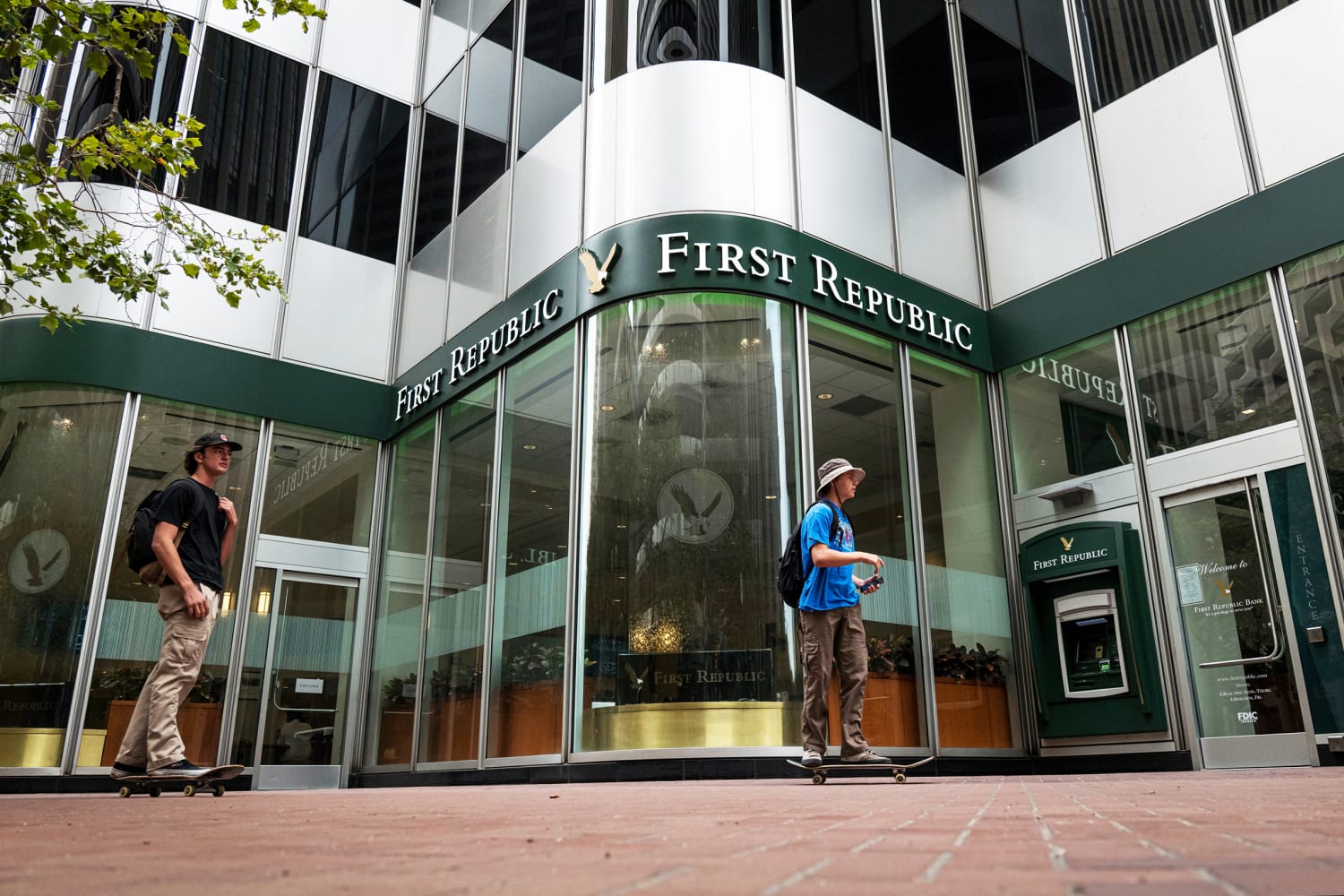Third Major Bank to Go Under: FDIC Seizes First Republic Bank, Sells Assets to JPMorgan
Key Highlights :

The collapse of First Republic Bank has been a major shock to the banking industry, with the Federal Deposit Insurance Corporation (FDIC) announcing on Monday morning that it had seized the bank and that JPMorgan Chase, the largest bank in America, would be purchasing substantially all of the bank's assets and deposits. With $229.1 billion in total assets at the time of closure, First Republic Bank has eclipsed Silicon Valley Bank ($209.0 billion at the time of closure) to become the second largest bank failure in American history.
The intervention comes days after First Republic reported losing about 40% of its deposits in the first quarter of this year. Amid rising interest rates and after the failures of Silicon Valley Bank and Signature Bank earlier this year, a growing cohort of depositors sought to move their money to banks seen as safer and offering more attractive returns. Among medium-sized banks, First Republic was most affected by the trend: As of mid-March, about 70% of its deposits were uninsured, according to Bank of America, meaning they were larger than the FDIC’s $250,000 guaranteed limit. That compares with a median of 55% uninsured deposits for medium-sized banks and the third-highest level after SVB and Signature Bank.
Despite a $30 billion infusion from 11 peer banks in mid-March, First Republic couldn't stop the bleeding: Its stock fell more than 75% over the past 30 days. The scale of the San Francisco-based lender’s deposit losses were an outlier compared with other regional banks, which saw a roughly 5% decline in deposits on average in 2023, according to Goldman Sachs Economic Research. Still, the rapid flight of deposits from First Republic had “created a lot of anxiety across the industry,” said Tim Coffey, managing director at Janney Montgomery Scott, a financial services group.
In addition to the uninsured deposits, First Republic was also carrying many loans with fixed, long-term interest rates that have begun to lose value as the Federal Reserve has repeatedly hiked its benchmark rate. First Republic had said in a press release last week that it was seeking help to reshape its balance sheet after the massive deposit flight. On Friday night, the bank said: “We are engaged in discussions with multiple parties about our strategic options while continuing to serve our clients.”
CNBC’s David Faber reported Tuesday that First Republic had been looking to sell assets to larger banks while it raised additional equity, but it was unclear if other banks would be willing to buy. Bloomberg News reported Tuesday that First Republic was looking to sell up to $100 billion of loans and securities to restructure its balance sheet. The lender had already ruled out a full sale to another bank, Faber reported.
By Friday afternoon, Reuters was reporting that an FDIC seizure was imminent after hopes of finding a private-sector solution fell through. Over the weekend, the government moved to take bids on First Republic, as the FDIC hoped to announce a closure of the firm alongside a purchase agreement. JPMorgan Chase was the winner.
“Our government invited us and others to step up, and we did,” JPMorgan Chase CEO Jamie Dimon said in a statement Monday morning. “Our financial strength, capabilities and business model allowed us to develop a bid to execute the transaction in a way to minimize costs to the Deposit Insurance Fund.” First Republic’s 84 branches in eight states will reopen Monday as branches of JPMorgan Chase.
The FDIC estimates the cost of First Republic's receivership will be about $13 billion, less than the $20 billion it estimated as the cost from Silicon Valley Bank's failure. The failure of First Republic Bank has been a major blow to the banking industry, as the bank was one of the largest regional banks in the country and its failure is a reminder of the fragility of the banking system.
The FDIC's swift intervention in the case of First Republic Bank has been seen as a sign of its commitment to protecting depositors and ensuring that banks remain solvent. The FDIC's decision to sell the bank's assets to JPMorgan Chase was seen as a sign of the strength and stability of the banking giant, and a sign that the banking industry is still capable of weathering turbulent times.
The failure of First Republic Bank is also a reminder of the importance of depositor protection. The FDIC's decision to guarantee deposits up to $250,000 was seen as a necessary step to ensure the safety of depositors and to protect the banking system from further destabilization.
The failure of First Republic Bank is a major reminder of the fragility of the banking system and the importance of depositor protection. The FDIC's swift intervention in the case of First Republic Bank has been seen as a sign of its commitment to protecting depositors and ensuring that banks remain solvent. The FDIC's decision to sell the bank's assets to JPMorgan Chase was seen as a sign of the strength and stability of the banking giant, and a sign that the banking industry is still capable of weathering turbulent times.
